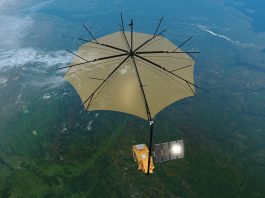As the global climate crisis intensifies, the looming threat of sea-level rise demands increasingly accurate and actionable projections.
A study led by researchers from Nanyang Technological University, Singapore (NTU Singapore), and Delft University of Technology, Netherlands (TU Delft), offers a more reliable approach to forecasting rising sea levels.
Utilising an innovative ‘fusion’ method, the team projects that under a high-emission scenario, global sea levels could rise between 0.5 and 1.9 metres by 2100, significantly exceeding previous estimates.
Why current sea-level projections fall short
Traditional models for predicting sea-level rise rely on a mix of well-understood phenomena like glacier melt and more uncertain processes such as abrupt ice shelf collapses.
These discrepancies lead to a wide variation in predictions, making it challenging to estimate the true extent of future risks.
The United Nations Intergovernmental Panel on Climate Change (IPCC) has provided ‘likely’ ranges of sea-level rise, representing a 66% probability.
However, these projections lack a ‘very likely’ range (90% probability), leaving decision-makers with incomplete data to plan for extreme outcomes.
The NTU-led team developed the fusion method to fill this critical gap, which combines strengths from multiple existing models and integrates expert judgment.
This novel approach offers a clearer picture of future sea-level rise, addressing uncertainties and providing a valuable resource for governments and urban planners.
The fusion approach: A game-changer in sea-level science
The fusion method blends statistical techniques with expert assessments using data from the IPCC’s Sixth Assessment Report.
It incorporates projections with varying confidence levels, including both medium and low-confidence data, to capture extreme possibilities such as sudden ice sheet collapses.
A weighting system ensures that more reliable data is prioritised, while lower-confidence estimates are also factored in to account for uncertainty.
The findings reveal stark contrasts between scenarios:
- Low-emission scenario: A very likely sea-level rise of 0.3 to 1.0 metres by 2100, compared to the IPCC’s likely range of 0.3 to 0.6 metres.
- High-emission scenario: A very likely sea-level rise of 0.5 to 1.9 metres, significantly exceeding the IPCC’s likely range of 0.6 to 1.0 metres.
These projections suggest that previous estimates may have underestimated the potential for extreme outcomes, with the possibility of sea levels rising nearly 90 cm higher than earlier assessments.
Implications of rising seas for coastal communities
The broader uncertainty ranges highlighted by the fusion model underscore the urgent need for robust climate action.
A rise of up to 1.9 metres could have catastrophic impacts on coastal infrastructure, ecosystems, and communities.
Critical urban centres, particularly in low-lying regions, face increased vulnerability to flooding, storm surges, and habitat loss.
According to the research team, accurate projections are essential for guiding infrastructure investments and disaster preparedness.
Coastal cities must adopt adaptive measures, such as seawalls, elevated construction, and ecosystem-based solutions, to safeguard against worst-case scenarios.
Climate mitigation strategies
The fusion model’s projections also reinforce the importance of reducing greenhouse gas emissions to mitigate climate change.
While current trends suggest the world is on a trajectory between low- and high-emission scenarios, immediate action to limit emissions could prevent the most extreme sea-level rise outcomes.
Planning for the possibility of extreme sea-level rise, however, remains critical. Decision-makers are encouraged to incorporate very likely projections into risk assessments, ensuring that long-term infrastructure and urban planning can withstand even the most severe scenarios.
A new standard in sea-level science
This pioneering study represents a significant breakthrough in sea-level science, addressing long-standing challenges in projecting future risks.
By providing a more comprehensive view of uncertainty, the fusion method sets a new standard for climate projections.
The researchers believe their approach could extend beyond sea-level rise to other areas, such as coastal flooding risk assessments and economic impact forecasts.
By refining the fusion method further, they aim to contribute to global efforts to prepare for and mitigate the impacts of climate change.









